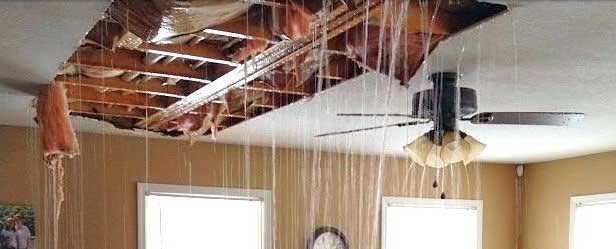6 Water Damage Reconstruction Do's and Don'ts.
6 Water Damage Reconstruction Do's and Don'ts.
Blog Article
Right here in the next paragraph you can discover more amazing additional info related to Safety Tips To Prevent Fire And Water Damage.

Though water provides life, water invasion on parts where it's not expected to be can result in damage. If the water saturates into your framework, it can peel off away surfaces and erode the structure. Mold and mildew as well as mildew additionally prosper in a moist setting, which can be harmful for your health and wellness. Homes with water damages odor old as well as musty.
Water can originate from lots of sources such as tropical storms, floods, ruptured pipes, leakages, as well as sewage system problems. In case you experience water damages, it would be excellent to know some safety and security precautions. Here are a couple of guidelines on just how to deal with water damages.
Do Prioritize Residence Insurance Policy Insurance Coverage
Water damage from flood because of hefty winds is seasonal. Nonetheless, you can also experience an abrupt flood when a faulty pipeline suddenly breaks into your residence. It would be best to have home insurance that covers both disasters such as natural tragedies, as well as emergency situations like broken plumbing.
Do Not Forget to Shut Off Utilities
In the event of a calamity, especially if you reside in a flood-prone location, it would certainly be advisable to shut off the major electric circuit. This cuts off power to your entire residence, avoiding electric shocks when water comes in as it is a conductor. Additionally, do not forget to turn off the primary water line valve. Furniture will move around and trigger damage when floodwaters are high. Having the major shutoff shut down prevents further damage.
Do Keep Proactive and also Heed Climate Signals
Tornado floodings can be extremely unforeseeable. Remain prepared and aggressive if there is a background of flooding in your neighborhood. Listen to discharge cautions if you live near a creek, lake, or river . Get valuables from the very beginning as well as basement, after that put them on the highest feasible level. Doing so reduces potential property damages.
Don't Neglect the Roof
Before the climate turns shocking, ensure you have a roof examination. In fact, it would be prudent to receive this solution yearly as it can mitigate complex concerns. If there are no holes and also leaks in your roofing, you can stay clear of rain damage. Your contractor will likewise care for defective seamless gutters or any other signs of weakening. This will stop water from moving down your walls and soaking your ceiling.
Do Pay Attention to Tiny Leaks
A burst pipe doesn't occur overnight. Usually, there are warnings that show you have deteriorated pipelines in your house. For example, you might observe gurgling paint, peeling wallpaper, water touches, water spots, or dripping noises behind the wall surfaces. Ultimately, this pipe will rupture. Ideally, you ought to not wait on things to escalate. Have your plumbing fixed prior to it leads to large damage.
Do Not Panic in Case of a Burst Pipe
When it comes to water damage, timing is crucial. Thus, if a pipeline ruptureds in your home, promptly shut off your primary water shutoff to reduce off the source. Call a trustworthy water damage repair professional for aid.
Water gives life, water invasion on components where it's not intended to be can result in damages. Residences with water damage scent stuffy and old.
Water damage from flooding charges to heavy winds is seasonal. You may observe gurgling paint, peeling off wallpaper, water streaks, water stains, or leaking noises behind the wall surfaces. When it comes to water damages, timing is key.
Some Do's & Don't When Dealing with a Water Damage
DO:
Make sure the water source has been eliminated. Contact a plumber if needed. Turn off circuit breakers supplying electricity to wet areas and unplug any electronics that are on wet carpet or surfaces Remove small furniture items Remove as much excess water as possible by mopping or blotting; Use WHITE towels to blot wet carpeting Wipe water from wooden furniture after removing anything on it Remove and prop up wet upholstery cushions for even drying (check for any bleeding) Pin up curtains or furniture skirts if needed Place aluminum foil, saucers or wood blocks between furniture legs and wet carpet Turn on air conditioning for maximum drying in winter and open windows in the summer Open any drawers and cabinets affected for complete drying but do not force them open Remove any valuable art objects or paintings to a safe, dry place Open any suitcases or luggage that may have been affected to dry, preferably in sunlight Hang any fur or leather goods to dry at room temperature Punch small holes in sagging ceilings to relieve trapped water (don't forget to place pans beneath!); however, if the ceiling is sagging extremely low, stay out of the room and we'll take care of it DO NOT:
Leave wet fabrics in place; dry them as soon as possible Leave books, magazines or any other colored items on wet carpets or floor Use your household vacuum to remove water Use TV's or other electronics/appliances while standing on wet carpets or floors; especially not on wet concrete floors Turn on ceiling fixtures if the ceiling is wet Turn your heat up, unless instructed otherwise

I discovered that blog post on Safety Tips To Prevent Fire And Water Damage when doing a lookup on the search engines. Sharing is nice. You won't know, you might be helping someone out. Thanks a bunch for your time. Don't hesitate to check our site back soon.
Report this page